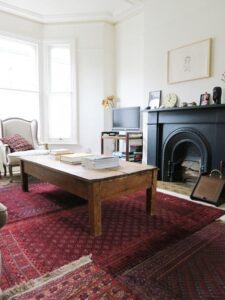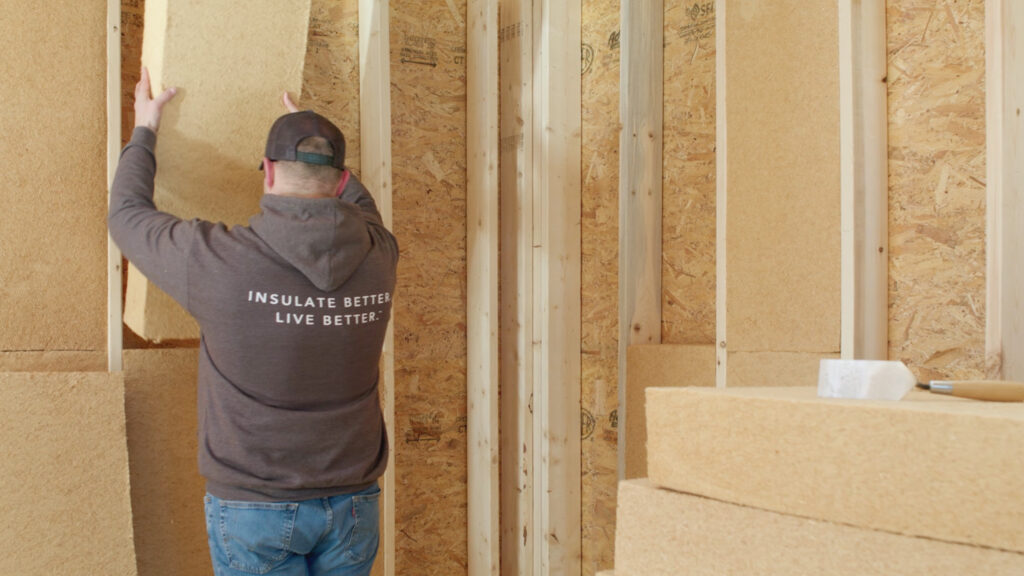Comprehensive Guide to Soundproofing an Older Home
We love older homes with their charming architectural details, traces of styles past, and stories of lives spent all contained within them. But from noisy pipes to your neighbor’s lawnmower or even just the sound of the TV from the next room over, living in an old house can be loud. And with remote work or trying to put your kids down for a nap, these sounds can disrupt your daily activities.
Home soundproofing not only reduces noise from outside the house, but it also isolates noise in each room and can increase the value of your home. Depending on the level of acoustic insulation you’re looking for, some soundproofing can even be DIYed. Whether you’re a DIY enthusiast or prefer to leave it to the pros, we’ve got you covered. Let’s dive into the world of home acoustics, exploring how you can identify your home’s sound weak spots and the various ways to turn your home into the serene oasis you deserve.
Why Are Older Homes So Loud?
We can’t explain what goes bump in the night in your older home… but we can tell you a bit about why you can hear the faucet running from two rooms away. Until the mid-20th century, most homes featured thin walls and minimal or poor insulation. This wasn’t just a style choice; it was often a necessity. The technology and materials we take for granted today, like advanced soundproof insulation and other soundproofing materials, were not available or were prohibitively expensive. Older homes also often featured single pane windows which are not only less energy efficient, but poor sound barriers. If you X-rayed my childhood home, which was built in 1864, you’d find little insulation between floors or in cavities… plus some mice and a doll embedded in the master bedroom wall.
The fact of the matter is residential buildings from this time weren’t built with home acoustics in mind and lacked the soundproofing materials to achieve the same level of quiet we expect in new construction. I love our old wide pine plank floors enough to put up with their occasional squeaking, but I know there are solutions to hearing someone sneeze all the way from the second floor.
Benefits of Home Soundproofing
Of course, home soundproofing reduces noise in your living space, both from outside and inside the home. That means less road noise, hearing the neighbor’s dog bark, voices between rooms, drawers opening and closing in the kitchen, and more. But the process of home soundproofing often leads to other benefits as well, such as improving energy efficiency, reducing drafts, increasing fire resistance, and upping the value of your home. Like any home renovation, improving your home acoustics is an investment.
Identifying Where Your Home Needs Acoustic Insulation
To make the most of your investment, you need to understand in which areas of your home soundproofing insulation will make the greatest difference in your home acoustics. There are four main elements that could be contributing to a noisier environment:
- Interior Walls: Especially in older homes, interior walls—walls that separate rooms within a building—lack insulation. This causes airborne sounds and impact noise to travel between rooms more easily and makes it hard to find privacy in your home. Soundproofing thin walls can make a huge difference in home acoustics.
- Exterior Walls: These are your first line of defense against external noise like traffic, construction, airplanes, or neighbors. While these are generally thicker than interior walls, even in older homes, insulation might be degraded, letting in exterior noise. Upgrading your acoustic insulation in exterior walls not only improves soundproofing but increases your home’s energy efficiency.
- Windows & Doors: These are often the weakest acoustical points in an older home. Common single pane windows and gaps around doors and thresholds easily allow noise to pass into your home or between rooms. Addressing these areas with double-glazing, weather stripping, or soundproofing curtains can drastically reduce noise intrusion.
- Cavities: Cavities in walls, ceilings, and floors can act like echo chambers, amplifying sounds throughout your home. These areas, if not properly insulated, can allow noise to resonate and travel. Filling these cavities with appropriate soundproofing material reduces noise transmission and enhances the overall acoustics of your home.
DIY Home Soundproofing Steps
For the hands-on homeowner, there are plenty of ways to reduce noise that are cost efficient and easy to tackle on a weekend.

- Fill the Space: Styling rooms with plush rugs and heavy curtains isn’t just chic; it’s an effective way to absorb sound. The more mass you can add between sound sources, the better. Tall furniture items like bookshelves also help block sound from passing through thin walls. We love the design approach of layering multiple rugs over one another.
- Seal the Gaps: Sometimes, it’s as simple as sealing gaps around windows and doors. A little caulk can go a long way. Weather stripping is also a budget friendly option for sealing gaps but often requires regular replacing. Door draft stoppers can also make up for those not so level doorways in older homes.
- Soundproofing Panels: These nifty panels can be a stylish and functional addition to any room and are now manufactured in a variety of colors and patterns that can be adapted to your home’s style. They work especially well in home offices or bedrooms where noise can be especially disruptive.
Professional Soundproofing Insulation & More
When it comes to achieving the best results in soundproofing your home, professional renovations can make a significant difference. Let’s explore how each suggestion contributes to acoustics and what homeowners can expect if they decide to go this route:
- Wood Fiber Insulation: This eco-friendly option is exceptional for soundproofing. Wood fiber insulation is dense and porous, allowing it to effectively absorb sound waves and reduce noise transmission through walls and ceilings. When professionally installed, it can replace or augment existing insulation in walls, roofs, and floors. The process typically involves removing part of the wall or ceiling surface, installing the soundproof insulation, and then resealing and finishing the surface. It’s a more involved renovation but offers substantial acoustic, energy, and environmental benefits.

- Upgrade Windows and Doors: Upgrading to soundproof windows and doors is a game-changer for reducing external noise. Soundproof windows often involve double or triple glazing, which significantly reduces noise penetration by creating a barrier of air or inert gas between glass panes. For doors, choosing soundproof materials are key; solid-core doors are much more effective at blocking sound than hollow-core doors. The installation process requires a professional to remove the existing windows or doors and replace them with soundproofed versions, ensuring airtight seals for maximum efficiency.
- Acoustic Drywall: Acoustic drywall is a specialized product designed to dampen sound. It’s denser than regular drywall and often includes layers of sound-dampening materials. When installed, it can substantially reduce the transmission of sound through walls and ceilings. The installation process involves replacing or overlaying existing drywall with acoustic drywall. It’s an intensive process, as it may require removal of existing wall finishes, but the results can dramatically improve a room’s soundproofing.
Engaging professionals for these renovations ensures that the job is done effectively and safely, particularly important given the structural implications of some of these solutions. Homeowners should expect some level of disruption during the renovation process, as areas may need to be stripped back to the studs to install these wall soundproofing solutions. It’s also a good opportunity to address any other underlying issues, such as electrical or plumbing updates, while walls or ceilings are exposed. Overall, while these renovations can be more costly and involved than DIY solutions, the improvement in home acoustics can be substantial and add significant value to the property.
Turning your home into a peaceful retreat doesn’t have to be a far-off dream. With the right home soundproofing strategies, from simple DIY fixes to professional renovations, you can transform your living space into a serene sanctuary where the only sounds you hear are the ones you choose.